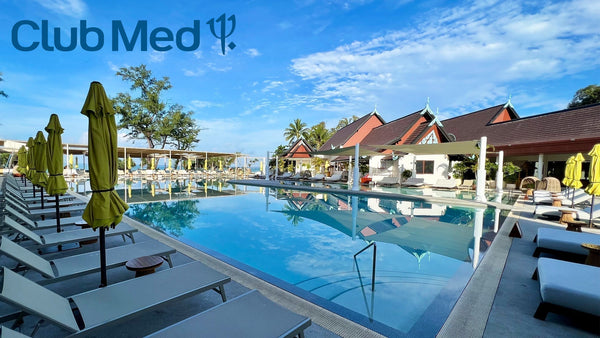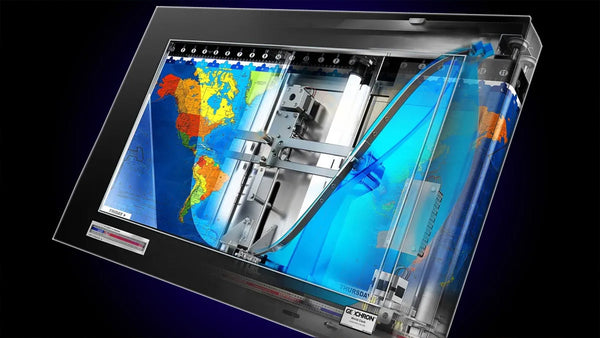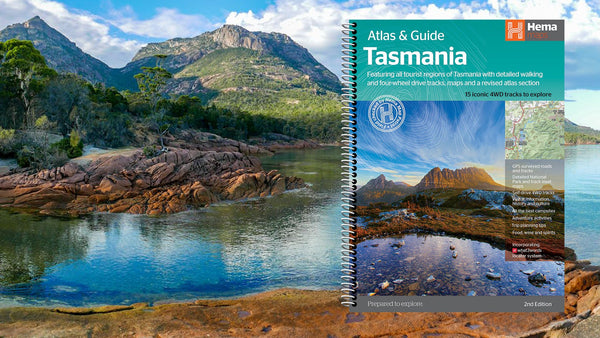- Australia ▾
- Topographic
▾
- Australia AUSTopo 250k (2024)
- Australia 50k Geoscience maps
- Australia 100k Geoscience maps
- Australia 250k Geoscience maps
- Australia 1.1m Geoscience maps
- New Zealand 50k maps
- New Zealand 250k maps
- New South Wales 25k maps
- New South Wales 50k maps
- New South Wales 100k maps
- Queensland 10k maps
- Queensland 25k maps
- Queensland 50k maps
- Queensland 100k maps
- Compasses
- Software
- GPS Systems
- Orienteering
- International ▾
- Wall Maps
▾
- World
- Australia & New Zealand
- Countries, Continents & Regions
- Historical
- Vintage National Geographic
- Australian Capital Territory
- New South Wales
- Northern Territory
- Queensland
- South Australia
- Tasmania
- Victoria
- Western Australia
- Celestial
- Children's
- Mining & Resources
- Wine Maps
- Healthcare
- Postcode Maps
- Electoral Maps
- Nautical ▾
- Flags
▾
- Australian Flag Sets & Banners
- Flag Bunting
- Handwavers
- Australian National Flags
- Aboriginal Flags
- Torres Strait Islander Flags
- International Flags
- Flagpoles & Accessories
- Australian Capital Territory Flags
- New South Wales Flags
- Northern Territory Flags
- Queensland Flags
- South Australia Flags
- Tasmania Flags
- Victoria Flags
- Western Australia Flags
- Gifts ▾
- Globes ▾
Dear valued customer. Please note that our checkout is not supported by old browsers. Please use a recent browser to access all checkout capabilities
The Gibb River Road: A Pilgrimage Through the Kimberley’s Wild Cathedral

There are roads, and there are rites of passage.
And then there’s the Gibb River Road.
A name that reverberates through the travel diaries of the bold and the dusty, the Gibb is no ordinary track—it is 660 kilometres of corrugated defiance, cut through one of the oldest and most staggering landscapes on Earth. This is not a shortcut; it’s a slow revelation, from the boabs of Derby to the sandstone ridges near Kununurra, a route carved by stockmen, Indigenous custodians, and time itself.
And though modernity has crept in—sealed sections here, a lodge there—the Gibb remains gloriously, stubbornly untamed. The kind of road that tests not just your suspension but your sense of scale. You don’t conquer the Gibb. You don’t tick it off. You surrender to it.
And the Hema Kimberley Map, 15th Edition, is your key.
Don’t even consider beginning this journey without it. Not a phone app. Not a folded servo printout. This map—waterproof, rugged, obsessively detailed—is your truth-teller. It shows more than roads; it reveals campsites, gorges, Indigenous communities, station tracks, fuel drops, and more lore than most guidebooks manage in 300 pages. It’s your passport to the Kimberley—fold it well, follow it closely, and trust it more than your instincts.
Now then. Shall we begin?
Setting the Scene: East or West?
The Gibb River Road connects Derby in the west to Kununurra in the east. Both are worthy bookends. Choose your direction wisely.
-
Start in Derby, and you enter through the red-tinged doorway of boab country. It’s remote, stark, beautiful in its austerity. You’ll begin with wide skies and hard roads, and end in the lushness of the Ord River plains.
-
Start in Kununurra, and your journey begins green, easing you into the drama to come. El Questro and the Pentecost River will make you feel bold. But by the time you reach Windjana, you’ll understand why this place was never meant to be tamed.
Either way, the road gets to you. Dust in your boots. Silence in your ears. Stars in your blood.
The Essential Companion: Hema Kimberley Map, 15th Edition
This is no ordinary fold-out.
The 15th Edition of Hema’s Kimberley Map is the definitive navigation tool for this region. Printed on hardy synthetic paper, it is waterproof, tear-resistant, and updated with the latest road conditions, track closures, fuel locations, camping areas, park boundaries, Aboriginal lands (requiring permits), and remote station turn-offs.
Each gorge, creek, and wilderness camp is clearly marked, distances are accurate, and the back contains indexed insets for popular off-Gibb detours like Kalumburu, Mitchell Plateau, and Mornington.
Trust the Hema. It won’t reroute you or lose signal. And it won’t mind when you accidentally spill roo curry on it.
The Journey: A Gorge-By-Gorge Reckoning
Now, let us travel.
1. Derby to Windjana Gorge (150km)
Leaving Derby, the bitumen vanishes like a goodbye. You enter into the King Leopold Range Conservation Park (now Wunaamin Miliwundi Ranges), a place of sweeping escarpments and hidden creeks.
First stop: Windjana Gorge National Park.
Cut through by the Lennard River, Windjana is not just a gorge—it’s a cathedral of limestone, 375 million years old. The cliffs rise 100 metres on either side, home to fruit bats, corellas, and freshwater crocodiles lounging in the shallows like sentries.
Stay at the national park campground. Walk the gorge trail at dawn or dusk. Take only photographs, leave only footprints, and watch the rock walls change colour with the light.
2. Tunnel Creek (35km detour)
A short drive south from Windjana brings you to Tunnel Creek, one of the most thrilling, eerie, and oddly exhilarating experiences in the Kimberley.
Bring a torch, reef shoes, and courage—this is a walk through a cave stream, underground, often ankle-deep in water (sometimes deeper), completely dark, and with a powerful backstory.
This was the hideout of Jandamarra, the Bunuba warrior who led resistance against colonial forces in the 1890s. His spirit echoes in the dripping silence.
The cave is about 750 metres long. At the far end, a wall of light and banyan trees welcomes you back into the daylight.
3. Bell Gorge & Silent Grove (80km east)
Ask anyone who’s done the Gibb: What’s the best swimming hole? Most will whisper: Bell Gorge.
It’s not just a waterfall. It’s a multi-tiered amphitheatre of cascading water, red stone, and pure joy. The hike in from the car park is rocky but manageable (about 1.5km). The plunge pool is large, cold, and irresistible.
Camp at Silent Grove, a national park site with decent amenities and a rare touch of shade.
Your Hema Map will clearly show the turn-off—don’t miss it. Bell Gorge is the kind of place that lives in your bones long after you’ve towelled off.
4. Mount Hart Wilderness Lodge (49km off the Gibb)
For those craving both seclusion and soft bedding, Mt Hart delivers. Hidden within the Wunaamin Miliwundi Ranges, this former cattle station turned wilderness lodge is one of the Kimberley’s secret stars.
You’ll find rock pools, bush tracks, secluded waterfalls, and a warm welcome. Dinner is communal, the red wine flows freely, and the stories around the campfire are worth every bump of the rough access road.
Mt Hart is well-marked on your Hema, but ring ahead—the track conditions vary, and it’s best to book in advance.
5. Mornington Wilderness Camp (88km off the Gibb)
Run by the Australian Wildlife Conservancy, this detour is a bit of a journey, but it is, without hyperbole, one of the most staggeringly beautiful places in Australia.
Set along the Fitzroy River, Mornington offers birding, canoeing, safari tents, and the feeling of being completely removed from the world. The gorge at Dimond Gorge is spectacular. And Siren Falls? Impossible.
Again, your Hema will be your friend. The track is clearly marked and includes warnings for wet-season washouts and creek crossings.
6. Manning Gorge (via Mt Barnett Roadhouse)
Back on the Gibb proper, you’ll reach Mt Barnett Roadhouse—a fuel stop, resupply point, and gateway to one of the iconic gorge hikes of the Kimberley.
Manning Gorge begins with a river crossing—in a floating esky ferry—then opens into a hot, rocky hike (around 3km each way) ending in a giant waterfall-fed pool.
This is the swim you earned. The one that cools your soul. Take your time. There are flat rocks to sun yourself on, shade trees to nap beneath, and a feeling that this—this—is why you came.
Camp at Manning Gorge campground, run by the roadhouse. It’s simple, dusty, and perfect.
7. Galvans Gorge
Unlike Manning, Galvans is gentle, short, and dreamy. A 10-minute walk from the Gibb leads you to a palm-fringed waterhole complete with rope swing and Wandjina rock art peering from the ledge above.
There’s often no one there.
You’ll want to stay for hours. Swim. Swing. Listen to the frogs. Watch the dragonflies. Know that places like this still exist.
8. Drysdale River Station & Kalumburu Road (Optional Detour)
If you’re equipped, and confident, consider the detour north up Kalumburu Road toward Drysdale River Station, Mitchell Plateau, and Kalumburu. This is serious 4WD country. Washouts, corrugations, and remoteness at its finest.
The payoff? Mitchell Falls, one of the greatest waterfalls on the continent, reached via a hike or scenic chopper flight. This detour is clearly marked on the Hema map, with accurate distances and travel time estimates.
But heed the warning: This is not for soft suspensions or soft people.
9. Pentecost River & Home Valley Station
And then: the Pentecost Crossing.
The most photographed section of the Gibb. The Cockburn Range rises behind the wide floodplain like the gates of Valhalla. The river glitters. The track descends.
Check conditions first—it can be impassable early in the dry. Walk it first. Know your clearance. But when you do cross, slowly and surely, it feels like an achievement.
Home Valley Station awaits just beyond—a working cattle station turned outback resort. There’s an iconic bar, horses, glamping tents, and starlit dinner settings that might ruin you for all future bush pubs.
10. El Questro Wilderness Park
The grand finale.
El Questro is enormous—over 700,000 acres of wilderness, gorges, rivers, thermal springs, and Instagram dreams. Whether you camp by the river, book a luxury homestead suite, or hike through Emma Gorge with a wet towel on your neck, this is the Kimberley in cinematic widescreen.
Don’t miss:
-
Zebedee Springs: Thermal pools under the palms. Heaven before breakfast.
-
Amalia Gorge: A tough hike to a multi-tiered waterfall.
-
Explosion Gorge: Reachable by 4WD or guided tour. Jaw-dropping.
-
Saddleback Ridge: Sunset central. Bring your camera and your best gasps.
Your Hema map has all trails, campsites, and turn-offs clearly marked. El Questro alone could fill a guidebook.
Practicalities & Preparation
This isn’t Disneyland. Prepare well.
Vehicle Requirements
-
High clearance 4WD
-
Spare tyres (minimum two)
-
Tyre repair kit and compressor
-
Extra fuel (20–40L minimum)
-
Water (minimum 5L per person/day)
-
First aid kit, satellite phone, or EPIRB
Best Time to Go
May to September is dry season and prime time. Earlier is wetter (better waterfalls), later is drier (better roads). Avoid the wet season. The Gibb becomes a river.
Final Thoughts: The Road That Stays With You
The Gibb River Road is not a checklist. It’s a conversation with deep time.
Each sunrise over a gorge, each tyre track in red dirt, each swim beneath a rock shelf carved by centuries—these are not just moments. They are invitations.
And when the trip ends—when you’re back in air conditioning, with clean shoes and petrol that costs less than a minor fortune—you’ll find yourself quiet for a time. You’ll reach for your Hema Kimberley Map, 15th Edition, and trace your route with a fingertip, remembering.
The silence.
The stars.
The long red road.
You’ll understand that the Gibb isn’t something you do.
It’s something you become.
Leave a comment
Comments will be approved before showing up.
Also in Travel Writings / Product Reviews

Club Med Phuket: Our Full Week in Review
Whether you’re a family chasing a balance between togetherness and independence, a couple craving peace and cocktails, or simply someone ready to trade routine for ritual—this is your place.

Where the Sun Never Sets: A Glorious History of Geochron World Clocks
The Geochron, whether mechanical or digital, offers more than information. It offers perspective. It reasserts the idea that we are part of a rotating story—lit by the sun, divided by clocks, and unified by the gentle ticking of planetary rhythm.

Tracks, Trails & Tassie Tales: A Rambler’s and Rover’s Guide to Tasmania
Tasmania doesn’t just offer adventure. It insists on it. It pulls you into its wilderness, tests your knees and diff locks, and then offers you a view that resets your understanding of beauty.
Christopher O'Keeffe
Author